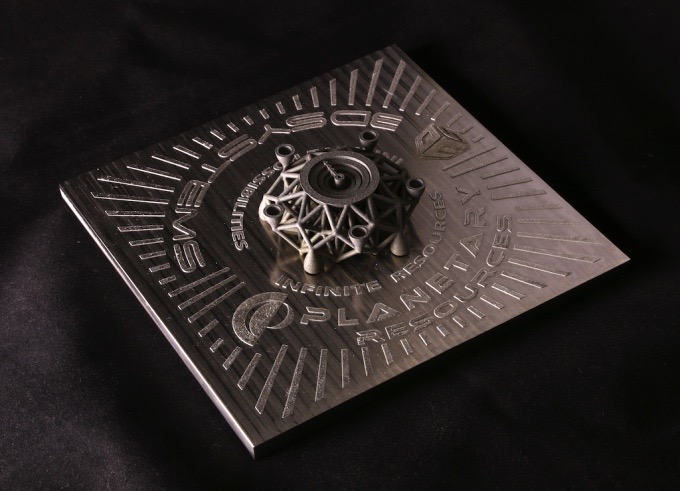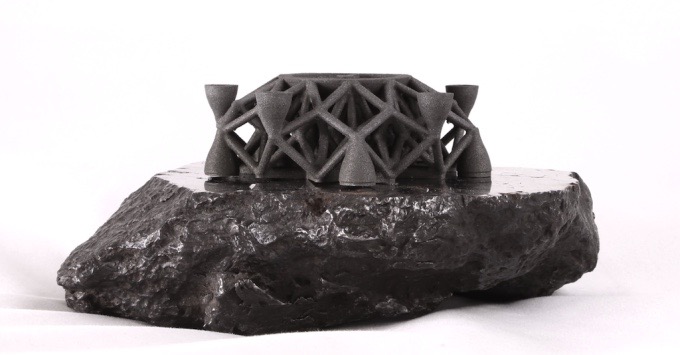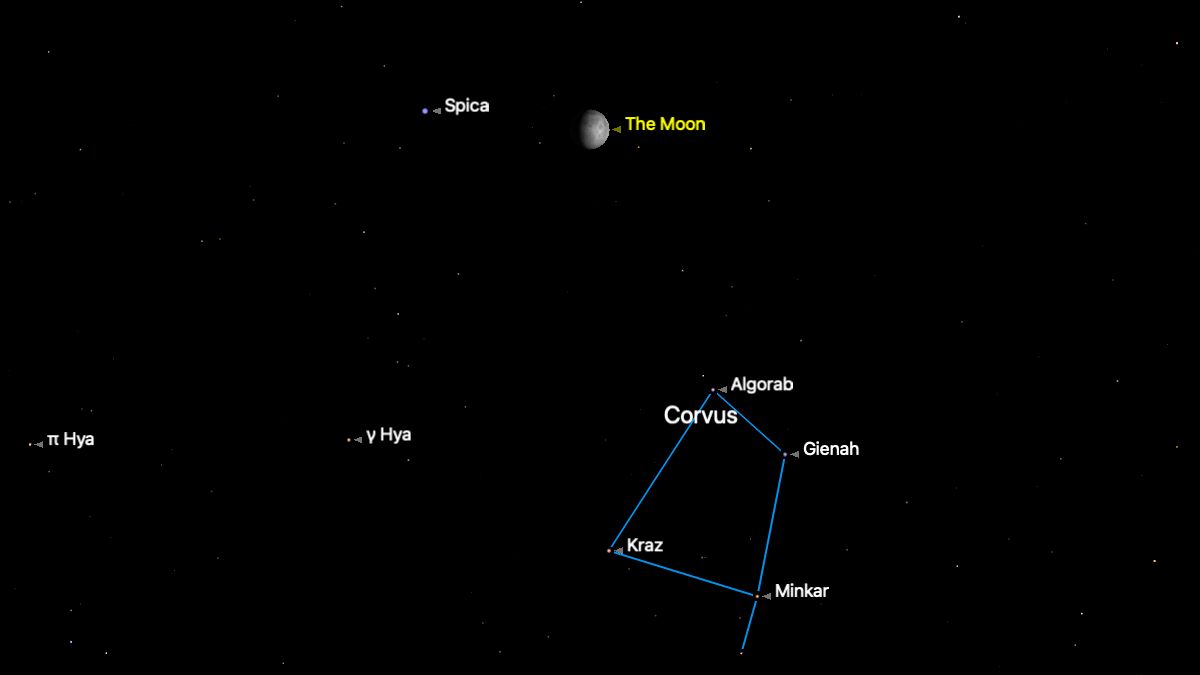
An asteroid-mining company is giving the world a glimpse at its vision of the future.
Planetary Resources, which aims to extract water and other useful materials from asteroids, has 3D-printed an object using metal powder gleaned from a space rock.
"It is the first part ever 3D-printed with material from outer space and is reminiscent of a design that could originate from a 3D printer in the zero-gravity environment of space," Planetary Resources representatives wrote in a blog post Thursday (Jan. 7) about the object, which is about 1 inch (2.5 centimeters) tall by 3.4 inches (8.7 cm) wide and weighs 8.8 ounces (250 grams). [10 Ways 3D-Printing May Transform Space Travel]
"The asteroid (or meteorite) used for the print materials was sourced from the Campo Del Cielo impact near Argentina, and is composed of iron, nickel and cobalt — similar materials to refinery-grade steel," they added.
Planetary Resources worked with the company 3D Systems to build the complex geometric object, which was unveiled Thursday at the Consumer Electronics Show in Las Vegas.

Planetary Resources, which is based in Washington State, isn't the only entity that views 3D printing as a key technology in the spaceflight arena going forward. For example, NASA officials have said 3D printing could help open up the solar system to human exploration, by making voyaging spaceships and off-Earth outposts less dependent on their home planet for supplies and spare parts.
Indeed, the space agency recently teamed up with the California-based startup Made In Space to launch a 3D printer to the International Space Station, to see how well the technology works in microgravity. (The results to date are very encouraging, NASA officials and Made In Space representatives have said.)
Get the Space.com Newsletter
Breaking space news, the latest updates on rocket launches, skywatching events and more!
Planetary Resources' asteroid-mining ambitions begin with water, which the company plans to split into its constituent hydrogen and oxygen — the chief components of rocket fuel. If all goes according to plan, this propellant will be sold from in-space "gas stations," allowing spacecraft to top up their tanks on the go within the next 10 years. The company aims to eventually mine platinum and other valuable metals from space rocks. (Another company, Deep Space Industries, has similar ambitions.)
Planetary Resources already has a spacecraft in Earth orbit, a tiny cubesat called Arkyd-3R that deployed from the International Space Station last July to test avionics, software and other key technology that future asteroid-mining probes will need.
Follow Mike Wall on Twitter @michaeldwall and Google+. Follow us @Spacedotcom, Facebook or Google+. Originally published on Space.com.
Join our Space Forums to keep talking space on the latest missions, night sky and more! And if you have a news tip, correction or comment, let us know at: community@space.com.

Michael Wall is a Senior Space Writer with Space.com and joined the team in 2010. He primarily covers exoplanets, spaceflight and military space, but has been known to dabble in the space art beat. His book about the search for alien life, "Out There," was published on Nov. 13, 2018. Before becoming a science writer, Michael worked as a herpetologist and wildlife biologist. He has a Ph.D. in evolutionary biology from the University of Sydney, Australia, a bachelor's degree from the University of Arizona, and a graduate certificate in science writing from the University of California, Santa Cruz. To find out what his latest project is, you can follow Michael on Twitter.
